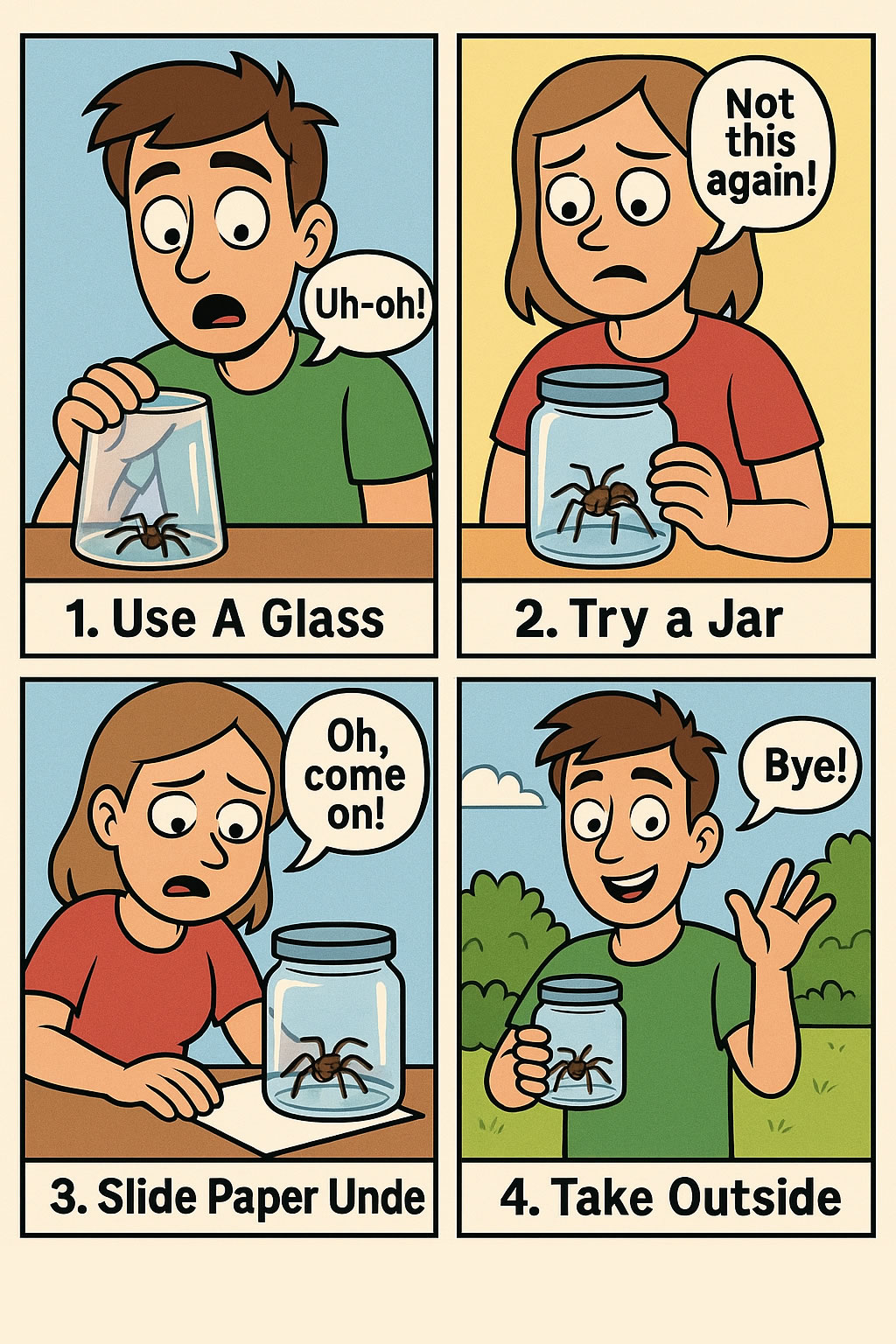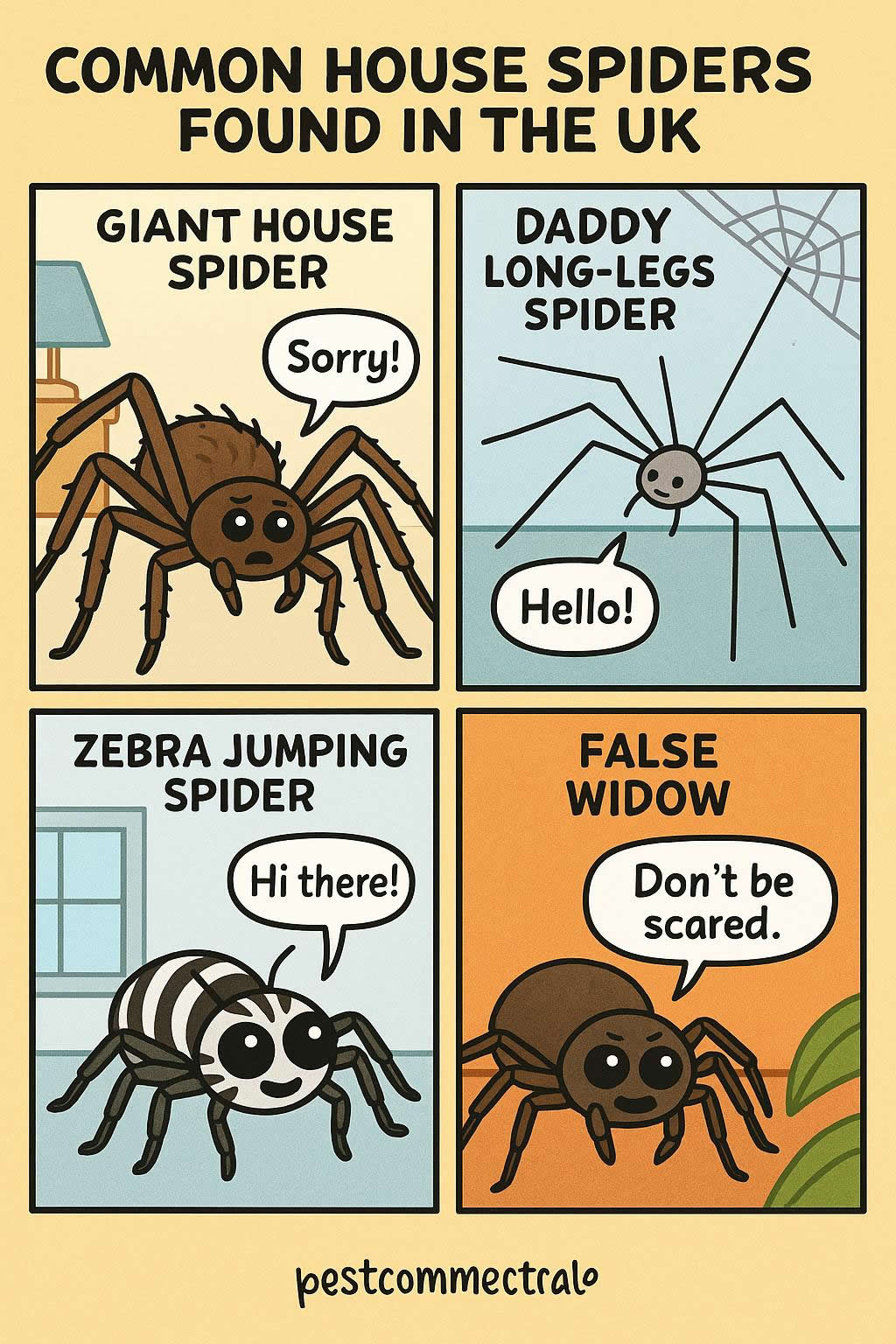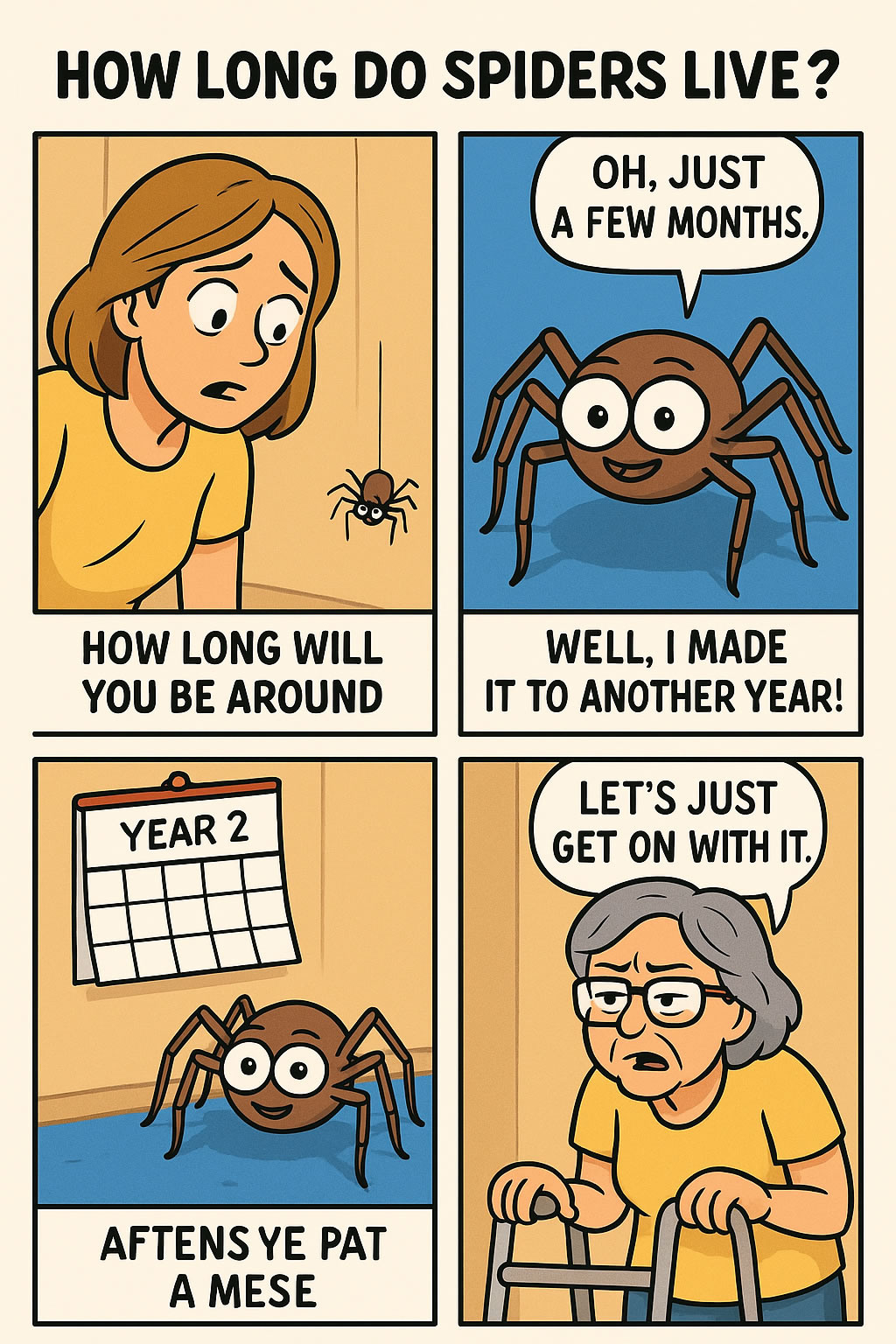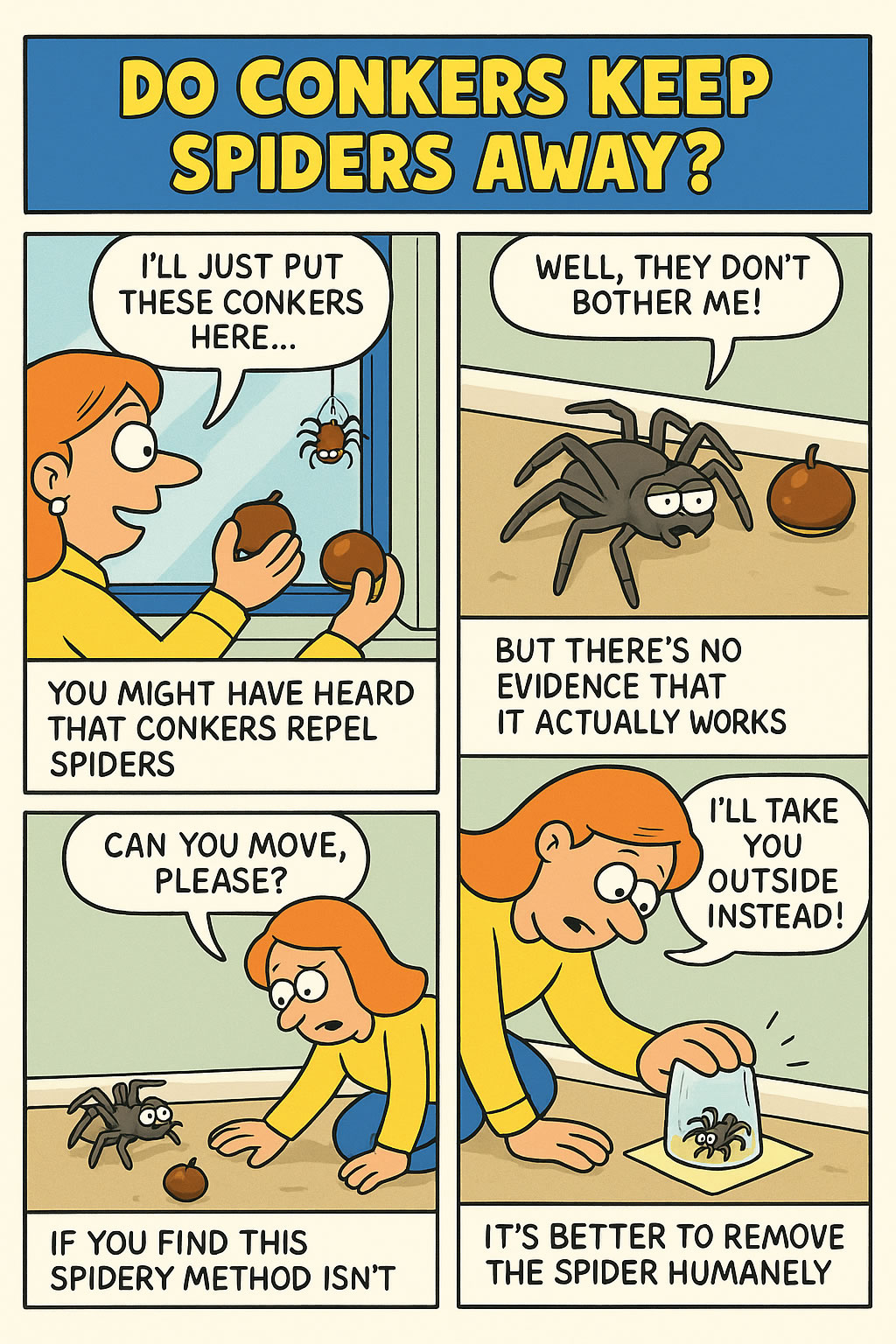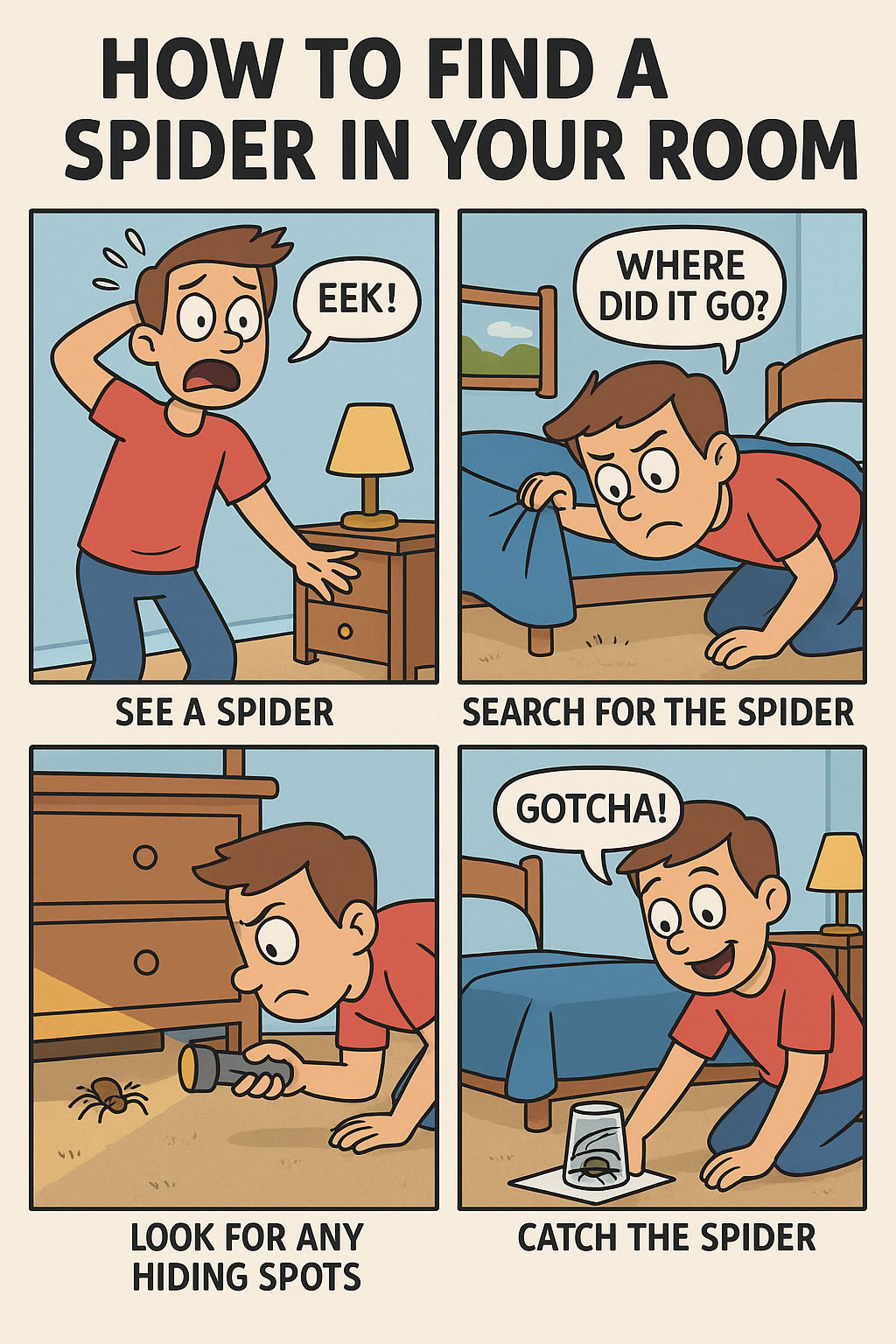Related Queries
ToggleSo, there’s a spider in your room—and you’ve locked eyes with it. You want it gone, but not crushed. You’re not looking to kill it. You just want to catch it and move on. Whether you’re afraid of spiders, allergic, or just don’t want one crawling over your pillow at night, it’s completely valid to want it out of your space. But where do you even begin?
In this guide, I’ll walk you through how to catch a spider safely, calmly, and without causing harm. Whether it’s in a corner, running across the wall, or hiding under the bed, you’ll know what to do.
Why Would You Want To Catch A Spider Instead Of Killing It?
Let’s start with the obvious question. Why not just squash it?
The truth is, most spiders you find indoors are completely harmless. In fact, they help control other pests like flies, mosquitoes, and moths. Killing them isn’t just unnecessary—it also breaks the balance they maintain. Plus, catching and releasing a spider is a cleaner, more humane way of dealing with the situation.
You might also be:
- Scared but still don’t want to hurt it
- Living in a rented property and want to keep it mess-free
- Trying to teach your kids a respectful way to deal with insects
Catching it gives you control without leaving behind mess or guilt.
What Do You Need To Catch A Spider?
You don’t need a spider-catching kit, fancy traps or harsh sprays. Most of the time, you’ve got everything you need already in your home. Here’s what works best:
- A clear glass or cup (transparent so you can see the spider)
- A stiff piece of paper or thin card
- A steady hand and a calm approach
You can also use things like a plastic container, a clear Tupperware lid, or even a bowl in a pinch. Just make sure the opening is wider than the spider so you don’t miss.
What’s The Best Method For Catching A Spider?
If you’re not sure which method to use, it helps to compare the pros and cons side by side. Each approach works differently depending on where the spider is, how comfortable you are getting close, and what tools you’ve got nearby.
Here’s a quick look at the most common ways to catch a spider and how they stack up:
| Method | Best For | Pros | Cons |
| Cup and Card | Walls, floors, slow-moving spiders | Easy, no special tools needed, humane | Requires close contact, needs a steady hand |
| Spider Catcher Tool | Ceilings, high walls, fast spiders | Long reach, no touching, reusable | You’ll need to buy one, may be hard with small spiders |
| Plastic Container + Book | Corners, hidden spots | Secure grip, large surface area | Harder to slide under quickly |
| Soft-Bristle Vacuum (with care) | Behind furniture, hard-to-reach areas | No contact, quick solution | Risk of injury to spider, needs immediate release |
| Ask Someone Else | If you’re scared or can’t do it | No direct involvement | Depends on others, not always an option |
This table isn’t about saying one method is right or wrong. It’s about helping you choose what works best for your situation, in that moment. Some people prefer getting it done themselves. Others want distance or support. Either way, the goal’s the same: remove the spider without harm, quickly and safely.
How Do You Find A Spider That’s Gone Missing?
One of the most frustrating things is spotting a spider, turning around to grab something, and then realising it’s gone. If that’s where you’re at, here’s how to find it again:
- Check warm, quiet spots – Spiders like areas behind furniture, under beds, along baseboards, or near radiators.
- Look near light sources – They often go towards windows, lamps, or TVs to catch insects.
- Don’t make loud movements – Spiders sense vibrations. The more you stomp around, the more likely they are to freeze or hide deeper.
- Use a torch – Shine it into corners and under furniture. Look for shadows or movement.
Still can’t find it? You could try leaving the room dark for a bit and coming back later when it’s quiet. Spiders usually come back out when they feel safe.
What’s The Best Way To Catch A Spider On The Wall Or Ceiling?
Walls and ceilings can feel like the worst places for a spider to hang out—literally. Here’s how to deal with it without making it worse:
- Slowly walk towards it with your cup in hand.
- Gently place the cup over the spider in one smooth motion.
- Slide the card or paper slowly between the wall and the cup.
- Keep the cup tilted just enough to trap the spider but not crush it.
Once it’s sealed between the card and the cup, tilt it upright and hold the card firmly underneath. Now it’s ready to be taken outside.
How Do You Catch A Spider That’s On The Floor Or Running Around?
Spiders on the move are trickier. They can change direction fast, and it’s easy to panic and miss.
Try this:
- Don’t chase it. Wait for it to pause.
- Drop the cup gently over it when it stops.
- If it runs under furniture, give it time to come back out. You can use a soft broom to gently guide it into the open, then try again.
You’ll need a bit of patience, but don’t rush. Keep calm, and the opportunity will come.
How Do You Catch A Spider In Your Bed Or Clothes?
If it’s crawled onto your duvet, your hoodie, or even worse—into your bed sheets—you’ll want to move quickly but gently.
- Don’t shake or swipe. That’ll just make it hide deeper.
- Gently lift the fabric to expose where it is.
- Use the cup and card method to trap it as soon as you see it.
Once you’ve caught it, check your bed or clothes again to make sure it was the only one.
What Time Of Day Are Spiders Most Active?
You might be wondering why you keep spotting them at night. Most spiders are nocturnal, which means they’re more likely to come out when the lights go down.
So, if you’re seeing them more often in the evening, it’s not just your imagination. To spot and catch one, wait until after dark, turn off the main lights, and use a torch to search quietly. Their movements stand out more when it’s still.
How Can You Make Sure It Doesn’t Come Back?
Catching a spider is only half the story. The next part is making sure they don’t come back inside. Here’s what you can do:
- Seal up small cracks and gaps in your walls, windows, and skirting boards.
- Install fine mesh on air vents and window openings.
- Keep rooms clutter-free, especially corners and storage areas.
- Avoid leaving lights on at night near open windows—they attract bugs, which attract spiders.
- Use natural repellents like peppermint oil or vinegar spray around entry points.
Spiders don’t want to be near you. If they’re coming in, they’re either following food or shelter. Take those away, and they’ll find somewhere else.
Can You Catch A Spider Without Touching It At All?
If the idea of getting anywhere near it makes your skin crawl, there are still ways to catch it:
- Use a spider catcher tool (a long-handled tool with gentle bristles that lets you trap it from a distance).
- Trap it with a large container, then slide a book or chopping board under the container.
- Use a vacuum cleaner with a hose, but only if it’s got a soft brush setting and you release the spider straight away outside.
Just be gentle. You don’t want to harm it—just move it out.
Is There A Way To Keep Spiders Out Of Your House For Good?
It’s tough to keep every spider out, but there are a few habits you can get into that’ll make your home less appealing to them:
- Hoover regularly, especially corners and ceiling edges
- Don’t let clutter build up in rooms you don’t use often
- Use citrus-scented cleaning sprays—spiders dislike the smell
- Keep windows shut during spider season (early autumn is when they come in to mate)
You won’t be able to completely spider-proof your home, but you can make it a lot less welcoming for them.
What If The Spider Is Too High Up To Reach?
If you spot one on the ceiling or high on the wall, you’ve got a few options:
- Use a long-handled spider catcher tool.
- Stand on a sturdy chair or stepladder with the cup-and-card method (but always stay safe).
- Wait for it to come down. They usually don’t stay up there forever.
Don’t risk your safety by stretching or climbing up on unstable furniture. Your safety matters more than getting it right away.
What Should You Do After You’ve Caught It?
Once it’s caught, take it outside. Walk a good distance from your home—at least a few metres from your door. Let it out gently in a quiet spot like a bush, a patch of grass, or under a tree. Don’t just dump it on a pavement or road.
Release it slowly by lowering the cup to the ground and sliding the card out. It’ll walk away on its own when it feels ready.
What If You’re Too Scared To Do It Yourself?
If you’re seriously arachnophobic, you don’t have to face it alone.
- Ask someone else in the house to help
- Call a local pest control service (some offer humane removal)
- Use a long-handled spider catcher that keeps you at a distance
You’re not overreacting. Fear is real, and it’s OK to admit that you need help. Just don’t let it grow into something that makes you feel unsafe in your own space.
Why Learning To Catch A Spider Helps You Feel More In Control
There’s something really empowering about being able to deal with a spider calmly. You don’t just remove a pest—you take back control of your space. It helps you feel less helpless when they show up again. And over time, you might even feel less anxious when you see one.
You don’t have to like spiders. But if you can catch one without panic, you’ll start to feel like they don’t run your room anymore.
Final Thoughts
Catching a spider doesn’t need to be a dramatic or dangerous moment. With a bit of patience, the right tools, and a steady approach, you can handle it quickly and safely.
It’s about giving yourself peace of mind without doing any harm. And once you’ve done it a few times, it really does get easier.
Whether you’re catching it from the wall, the bed, the floor, or the ceiling, the same rule applies—stay calm, be kind, and take it outside. You’ll feel much better afterwards.
Pest Control Sheep Lane – Pest Control Eaton Bray – Pest Control Caddington
